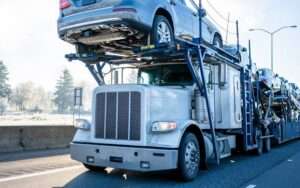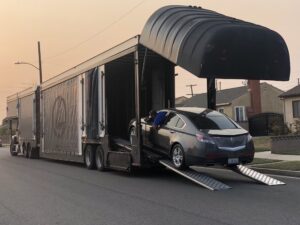
When it comes to car shipping services, everybody has the same basic problem in their minds. How much for a car to ship? Although quotes for transport cars will vary dramatically, there are a few ways to ensure that rates are as affordable as possible. It will still come with more competitive rates for newcomers to get their car driven on an open car carrier.
Savings, though, don’t have to stop there. Instead of door-to-door, you can also choose to get your car delivered terminal-to-terminal. Yeah, this means that when dropping off and picking up your car, you’ll have to arrange transportation from and to the airport.
However, this discomfort will translate into savings. Of course, with a terminal-to-terminal service, you must also consider the costs you may accrue. This includes expenses for storage, transportation costs, and charges for gas.
Related:
Is Your Car Safe During Auto Transport? Is Shipping a Car …
Things to Remember When Shipping a Car
However, this approach may be your most expedient and cheapest alternative if you live near a readily available terminal.
Car shipping service prices are unpredictable when it comes to transporting vehicles. The cost depends on a number of different factors, from the type and weight of the vehicle to the distance and company you go with. On average, however, for shorter distance travel, and as high as $1,500 for long hauls, you can expect around $500-$700. If it ends up being a little higher than that for a heavier truck, however, don’t be surprised.
Car shipping service rates rely on supply and demand as well. Right now, there are about 10,000 cars waiting to be shipped out of California. There are fewer truckers available to ship cars because of this.
If you choose an enclosed trailer for delivery, even if your vehicle is souped-up and modded, other variables that impact the shipping price include whether or not the car is in working condition.
Now that you have a better understanding of the different variables that go into the decision of a customer to have their car professionally delivered, you’re probably thinking about how much you need to budget. You have to know that the actual price you’re going to pay is dependent on several variables.
These considerations include:
BUILT AND MODEL
The most knowledgeable and customer-centric ones will have a shipping quote calculator when you visit a car shipper’s webpage. This calculator will give you an instant quote that is free and non-binding. Never pay for a quotation for delivery.
You’ll find that the Car shipping services calculator asks several different questions when you go through having a quote. Some of these have to do with the vehicle’s make and model.
Why are these variables significant? And they’re size-indicative. The longer and bigger a vehicle are, the more space a transporter takes up, and the more it would cost to drive.
Larger dimensions and changes to vehicles can also contribute to carrier adjustments.
TIME OF THE YEAR
There are a few things you need to keep in mind when it comes to seasonality. Next, for car transporters, summer happens to be the busiest time of year.
This is when the majority of individuals plan to travel. So, because of the extra demand, you can not get the best offers at this time of year.
While you would automatically believe that the cheapest time for car shipping is in winter, think twice. Ice and snow combine to make driving a large auto transporter a virtual disaster during the coldest months.
Prices and delivery times appear to go up as a result. What would be your safest bet? The higher your flexibility, the better the price you will get.
DISTANCE
For short distances car shipping services, the average cost of transporting a car is $1.96 per mile. Those that fall within a one to 500-mile range involve short distances.
So, spend at least $590 for a ride that’s about 300 miles long to cover costs and fees.
What about a longer ride? Moderate distances are considered for journeys of 500 to 1,000 miles. They run around $0.93 per mile, they come out, give or take, to $950 for 1,000 miles.
As far as long distances are concerned, you’ll pay around $0.58 per mile when you take trips of 1,500 miles or more. A journey of this length can cost you $870.
Like shopping in quantity at the supermarket, the farther you go, the better the rate per mile will be.
STATE OF VEHICLE
You’ll still need to accurately record your vehicle’s state. About why? And it’s far cheaper to ship cars that run than those who don’t.
To properly load a car onto a carrier trailer, the ability to steer, roll, and brake is crucial. If your car doesn’t have these features, then to shift it into position, the driver must rely on a winch or other equipment.
It is a time-consuming operation to deal with an inoperable car, and not one that a driver takes easily. A forklift is also required when loading. For this purpose, for vehicles that can roll, brake, and steer, many auto shippers only give quotes.
Drop-off and Pick-Up Location
You’ll want to keep in mind where the places for your pick up and drop off are located. It is because you’ll end up paying more the further the driver’s regular route.
Usually, metropolitan areas have plenty of available trucks and drivers. You will find more supply and some of the best prices since demand is high.
However, when it comes to rural areas, prices are climbing. Although an experienced and competent business should go to great lengths to secure you the best possible rate, expect to pay more in less trafficked areas no matter where you live.
The more you live off the main highway, the more you will have to end up paying.
TYPE OF TRANSPORT
We have already discussed it partially, but it is important to understand the choices available to you concerning the shipping of vehicles. By far, freight on an open carrier remains the most common and inexpensive alternative.
Open-Air carriers don’t protect vehicles from the weather or road grime, as the name suggests. They also do not shield cars from gravel and other debris from the pavement. But for passengers and ordinary drivers, they fit well.
After all, it is equivalent to a road trip to the misuse a vehicle would get on an open carrier. That said, what if you have a vehicle worthy of investment? You’ll need to pay more, in this case, to get an enclosed carrier.
Related Articles:





